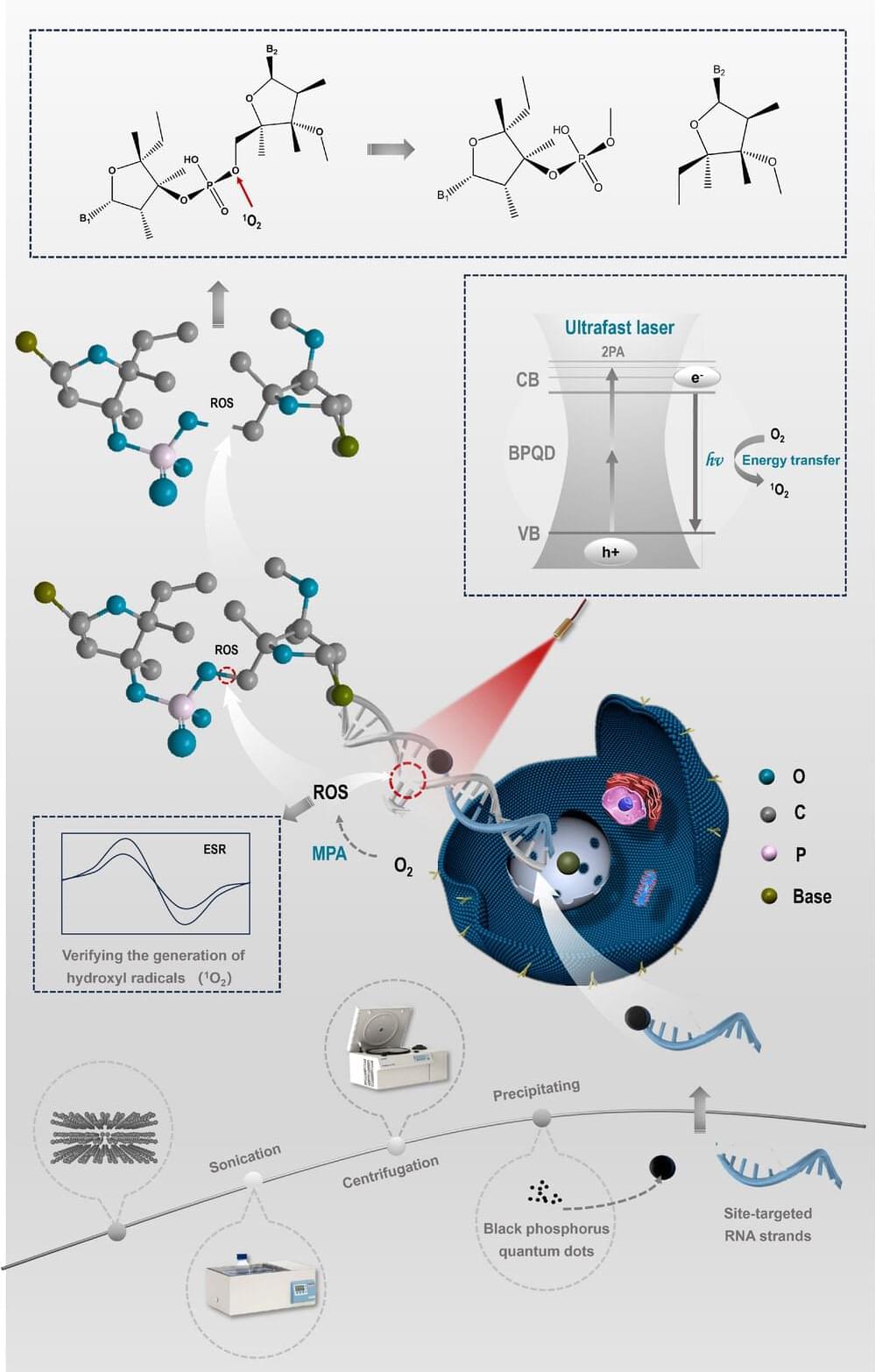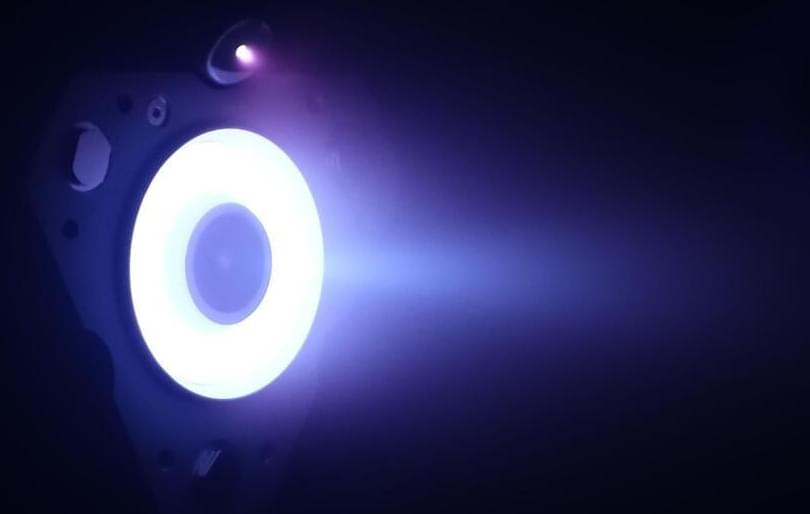Researchers develop TADPOLE, an enzyme-free black phosphorus quantum dot system for site-specific DNA cleavage using light, offering advantages over traditional methods.
FRV is building its first big battery project after landing a major funding deal. The BESS comes with a grant to install grid-forming inverters.
Strengthening Public Health Systems For Healthier And Longer Lives — Dr. Ashwin Vasan, Commissioner, NYC Department of Health and Mental Hygiene.
Dr. Ashwin Vasan, MD, PhD is the Commissioner of the New York City Department of Health and Mental Hygiene (https://www.nyc.gov/site/doh/about/ab…).
Dr. Vasan is a primary care physician, epidemiologist and public health expert with nearly 20 years of experience working to improve physical and mental health, social welfare and public policy for marginalized populations here in New York City, nationally and globally. Since 2014 he has served on the faculty at the Columbia University Mailman School of Public Health and Vagelos College of Physicians and Surgeons, and he continues to see patients as a primary care internist in the Division of General Medicine at New York-Presbyterian Hospital/Columbia University Irving Medical Center.
Dr. Vasan most recently served as the President and CEO of Fountain House, a national nonprofit fighting to improve health, increase opportunity, and end social and economic isolation for people most impacted by mental illness. During his tenure, he grew the organization from a New York-based community mental health organization to a national network across eight markets, and grew the budget by nearly $20 million annually. He helped navigate the organization through COVID-19 by driving new telehealth and digital mental health programs while its physical locations closed, as well as developing new community-based outreach and accompaniment programs. Further, Dr. Vasan led the creation of a national policy office in Washington, D.C., working to change national mental health policy on the issues of crisis response services and funding for and quality of community-based mental health services.
From 2016 to 2019, Dr. Vasan served as the founding Executive Director of the Health Access Equity Unit at the NYC Department of Health and Mental Hygiene, which focused on the intersection of clinical and social services for the care of people involved in the justice system and other vulnerable populations — a first-of-its-kind government program in the nation. Under his leadership the team launched the NYC Health Justice Network — an innovative partnership between community-based primary care providers, criminal legal system reentry organizations, the Health Department and the Fund for Public Health — to embed tech-enabled, peer community health workers to promote health and wellness of people reentering the community from incarceration, and their families. The program is currently under evaluation through the CDC Prevention Research Center grant to NYU and CUNY.
This is because the species undergoes a process called polyploidization, which is when a single chromosome is duplicated multiple times.
“It has amazing genetic diversity,” study co-author Tim O’Hara, a senior marine curator at Museums Victoria in Australia, told Newsweek.
“Instead of evolving into separate species over time, lineages readily hybridize with each other, so building up a great amount of genetic diversity. But not only that, they sometimes add their genomes together, so end up with four or more copies of each gene,” O’Hara said.
Elon Musk Interview
Posted in Elon Musk, robotics/AI
The latest AI News. Learn about LLMs, Gen AI and get ready for the rollout of AGI. Wes Roth covers the latest happenings in the world of OpenAI, Google, Anthropic, NVIDIA and Open Source AI.
My Links 🔗
➡️ Subscribe: / @wesroth.
➡️ Twitter: https://x.com/WesRothMoney.
➡️ AI Newsletter: https://natural20.beehiiv.com/subscribe.
#ai #openai #llm.
RELATED LINKS
“We can rewind to a previous scene or skip several scenes ahead.”
An worldwide team of scientists claims to have found a means to speed up, slow down, and even reverse the clock of a given system by taking use of the peculiar qualities of the quantum universe, as reported by Spanish newspaper El País.
The scientists from the Austrian Academy of Sciences and the University of Vienna presented their findings in six separate papers. The basic principles of physics do not transfer intuitively onto the subatomic world, which is made up of quantum particles known as qubits, which can exist in several states at the same time, a phenomenon known as quantum entanglement.
PRESTON, United Kingdom — China successfully launched the first batch of 18 satellites Tuesday for the Thousand Sails low Earth orbit communications megaconstellation.
A Long March 6A rocket lifted off from Taiyuan Satellite Launch Center, north China, at 2:42 a.m. Eastern (0642 UTC) Aug. 6. The China Aerospace Science and Technology Corporation (CASC) announced launch success just over two hours later.
The Long March 6A upper stage deployed 18 flat panel Qianfan (“Thousand Sails”) satellites into polar orbit for Shanghai Spacecom Satellite Technology (SSST).
Safran Electronics & Defense will establish a new production line for satellite electric propulsion systems in the United States to serve U.S. customers.
Join our newsletter to get the latest military space news every Tuesday by veteran defense journalist Sandra Erwin. Get the newsletter By clicking submit, you agree to share your email address with the site owner to receive the newsletters. You can opt-out at any time. Processing… Success! You’re on the list. Whoops! There was an error and we couldn’t process your subscription. Please reload the page and try again. WASHINGTON — The U.S. Army is considering the creation of a dedicated space career field for enlisted soldiers, a move that could significantly expand its pool of space experts and better equip land forces to face the technological challenges of modern warfare. Lt. Gen.
Scientists propose that human consciousness evolved primarily for social survival, enabling better communication and interaction within communities, rather than just individual benefit, challenging traditional views on the evolution of subjective awareness.









